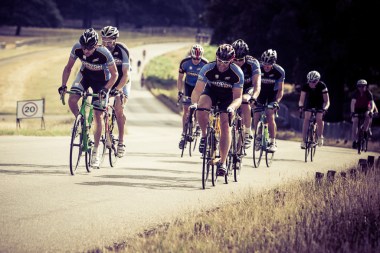Embed from Getty Images
It was the briefest of pricks. I didn’t think it would sting. I thought it would be completely undetectable. But he felt it. Boy, he felt it.
Walking towards me, this guy had suddenly turned left into my path, causing me to step back and swerve out of his way so he could barge into Tesco, his face buried in his phone.
“Prick,” I mumbled. I barely heard it myself.
But he wasn’t looking at his phone now. He’s lumbering behind me, bulky and indignant, shouting over and over, “WHAT DID YOU JUST CALL ME?”
I got to the cashpoint next to the Tesco. “I think we both know that I called you a prick,” I tell him as I take my card out of the machine. I’m smiling at him. It’s lunchtime on a weekday near Monument station in central London and he’s not going to fight me. Not with all these people walking by, surely, and not when he’s wearing a fucking suit.
He tells me I should be saying sorry to him because I was in his way, and I know I can’t top that, so I just shake my head and carry on smiling as I take a couple of tenners from the machine. Brilliantly, he provides the topper himself: “I WANT A REACTION” he shouts, clumsily trying to fill the gap I’ve left.
“Mate,” I say to him, even though I never call a stranger “mate”. But fuck it, let’s see what happens when I do. “Mate,” I say, “you got a reaction. You’re just fucked off because it’s not the one you wanted.”
He’s silent and for a moment I realise I may have got the odds wrong. He’s going to hit me. I can sense it. Then there’s another couple of seconds of him seething and me smiling and I know his chance has gone. I’m going to walk away from this. But before I go, he says something which sets the tone for a series of random yet revealing encounters I’m going to have during the next 18 months.
He says, “You think you’re so superior just because you’re a cyclist.”
Now at this point, I would dearly love to be incredibly superior and tell you that he identified a fellow pedestrian as a cyclist because I am, of course, in superb physical condition and I regularly draw gasps from passing strangers. Sadly, it was actually because I was pushing my bike along the pavement at the time. So instead of acting superior I’ll be grateful that The Lunchtime Thug, who wanted to teach me a lesson, actually taught me something more valuable: there is now a personality type that does not care how well you ride or even if you are riding at all. They are certain you are in the wrong chiefly because you happen to be a cyclist.
It happened again around six months later on another pavement and another lunchtime, on this occasion in Soho. I was running way ahead of time for a hospital appointment that I knew would bring a long-running series of check-ups to a welcome conclusion, so I wanted to find somewhere nice to eat beforehand. A quiet celebration for one. I had given up trying to work out the logic of Soho’s one-way streets and no-entry signs and was walking with my bike when two teenagers, looking like a pair of Dappys, rushed past me on the narrow pavement. One said to the other tetchily: “Cyclists should stay on the road.” Even when they’re not riding, it seems.
The next encounter was with a much older man, an Eighties throwback in one of those brown leather aviator jackets with the collar turned up, who expressed a similar view to Soho Dappy. He was walking in a cycle lane in Kingston a few months ago while having a telephone conversation as I freewheeled slowly behind him. After three polite “excuse mes” on my part, he finally turned round and moved to the pavement, but not before telling me I should have cycled on the road.
Finally, there was the night I came off on Borough High Street when I was trying to dodge a Friday night reveller. I was crawling along at less than 10mph when he suddenly appears, stepping out from behind a stationary bus. My front wheel tapped his leg and I hit the tarmac, where I lay for a few seconds, largely unhurt, listening to his angry lecture on the subject of how cyclists never look where they’re going. He was looking the wrong way before I hit him.
There was a time when I thought cycling in London would be accepted as a normal activity supported by the majority. And remarkably, as Andrew Gilligan pointed out last week in an Evening Standard piece about public consultations for road alterations, statistics show it pretty much has. In London, the majority don’t want fewer cyclists riding on the road (or having the temerity to walk on the pavement); they want more. That means, of course, that the dream of a completely cycle-friendly city is still within grasp. But the sour encounters I’ve had with cycle-unfriendly strangers fascinates me. How did seemingly normal people become so entrenched, so far beyond reason?
Perhaps it’s because they know they will never get their way. Many years ago, I’d frequently see badly-photocopied flyers in bike shops advertising mass gatherings of cyclists, the ultimate aim of these protests being the removal of motor vehicles from the road for good. Which, of course, did not come to pass. At the core of those fringe groups was a belief that the motorist was always, always wrong. Now the constituency of the fringe has moved: it is now populated by very different people who believe it is cyclists who are always, always wrong. Neither is true. But expressing it fuels a delusion that they might, somehow, go away one day.








